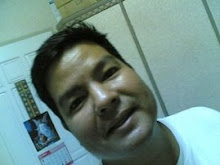Four to five days after koi eggs are fertilized, the eggs will hatch into koi larvae and reveal their first signs of life to onlookers. At this point, the happy owner of these newly hatched koi can't help but feel a well-deserved and overwhelming emotion of pride and success. But there's still one important task left at hand - nursing the larvae to health until they can properly take care of themselves.
Koi larvae do not have a developed swim bladder and can not control their buoyancy in water. They swim vertically by twisting their tails and require frequent rests, which they get by attaching themselves to substrates immersed in the water. Because of their inability to swim well, the water in the tank of the larvae must be kept tranquil, i.e., they must not be subjected to harsh water movements. Severe agitation of the water can easily sap the larvae of their energy, or worse, harm their fragile and sensitive bodies. Newly hatched larvae can be easily sucked into water filters too, which is why water filtration is not done at this point.
Although water tranquility is a 'must' for koi larvae, it must also be emphasized that there should be adequate and unimpeded aeration in their tank because they need an ample supply of oxygen at all times. They do not have gills and have to rely on the diffusion of oxygen through the entire surface of their body in order to 'breathe'. As such, they are very sensitive to oxygen depletion as well as the osmotic pressure resulting from the water in which they live in. Because oxygen is more easily depleted in 'dead corners', some experts recommend that a circular tank be used for hatching koi eggs and nursing koi larvae. This circular tank must be provided with silent-type air pumps that can continuously circulate oxygen around the tank.
Aside from providing a tranquil but adequate aeration to the larvae, another challenge is feeding them. Newly hatched larvae don't have a functioning mouth yet so they don't need to be fed. They will get their nourishment from their yolk during their first couple of days or so. Only when they have fully consumed their yolk will there be a need to feed them. Koi larvae normally begin their active quest for food on their third day.
Koi larvae must have ready access to food. Unfortunately, d
After 6 to 8 weeks of live feeding, the koi fry should be ready to eat dry foods. If everything went well up to this point, the koi fry are well on their way to growing into healthy koi adults and the koi keeper can finally relax.

.jpg)



























1 comment:
I seldom leave comments on blog, but I have been to this post which was recommend by my friend, lots of valuable details, thanks again.
Post a Comment